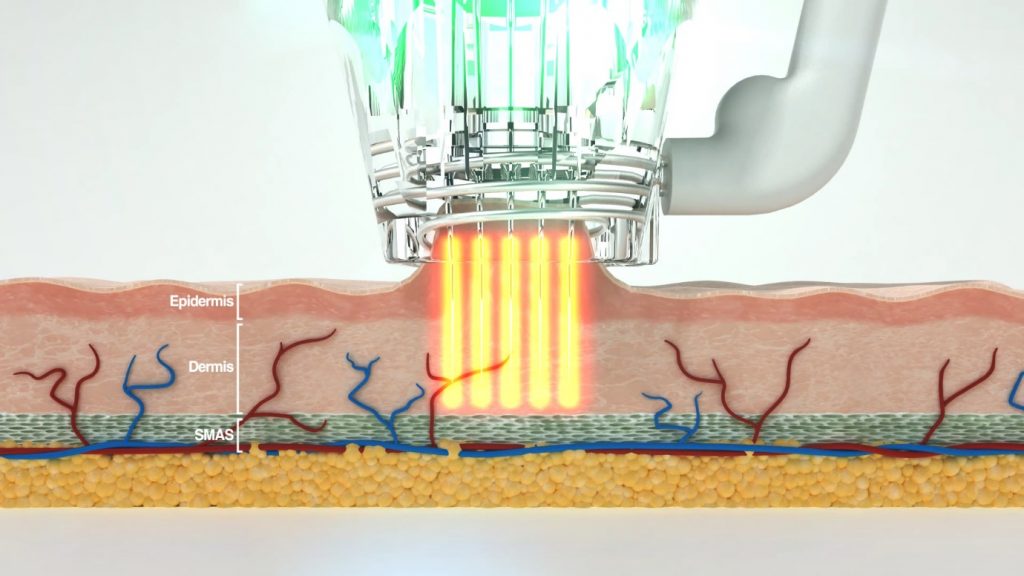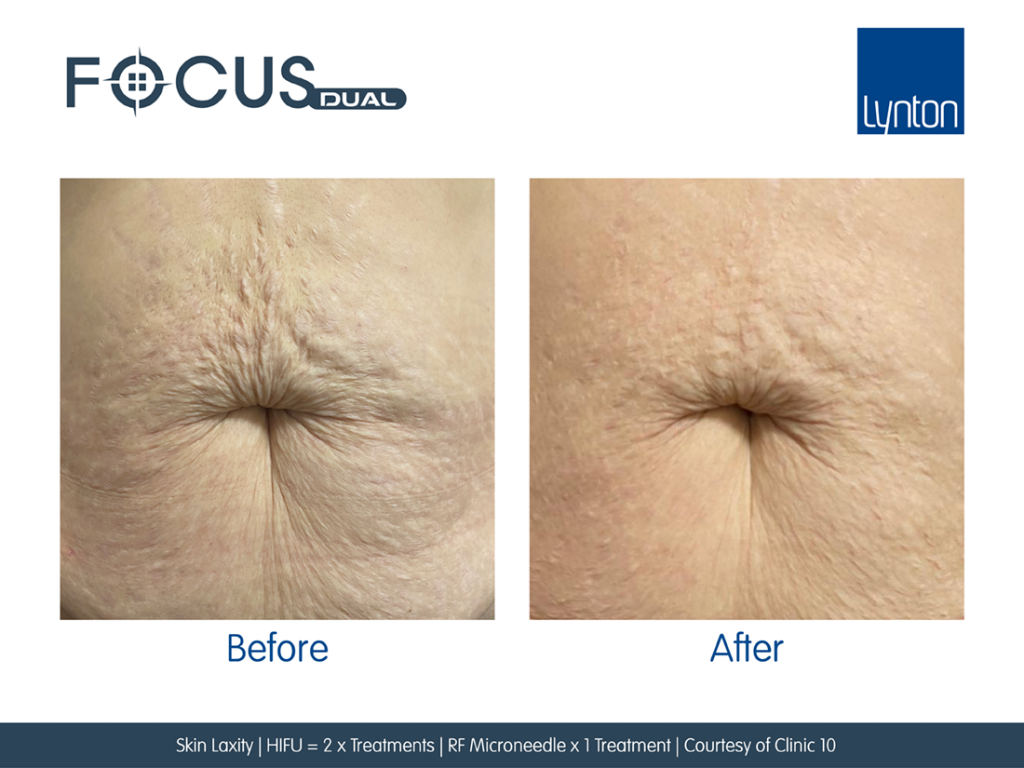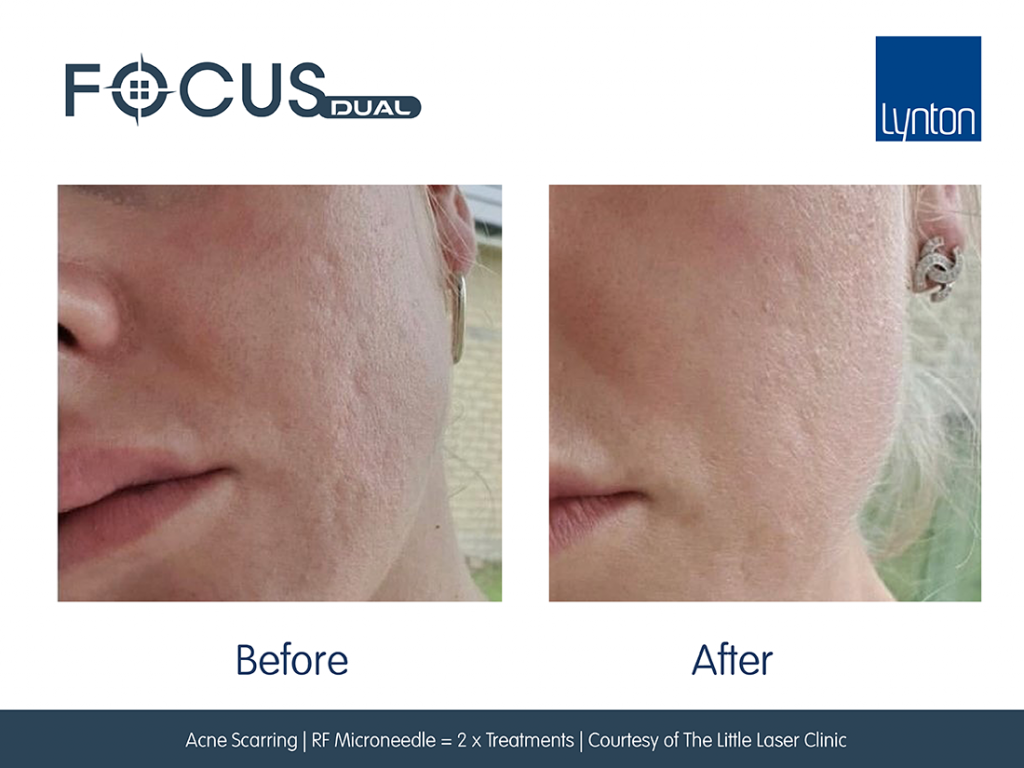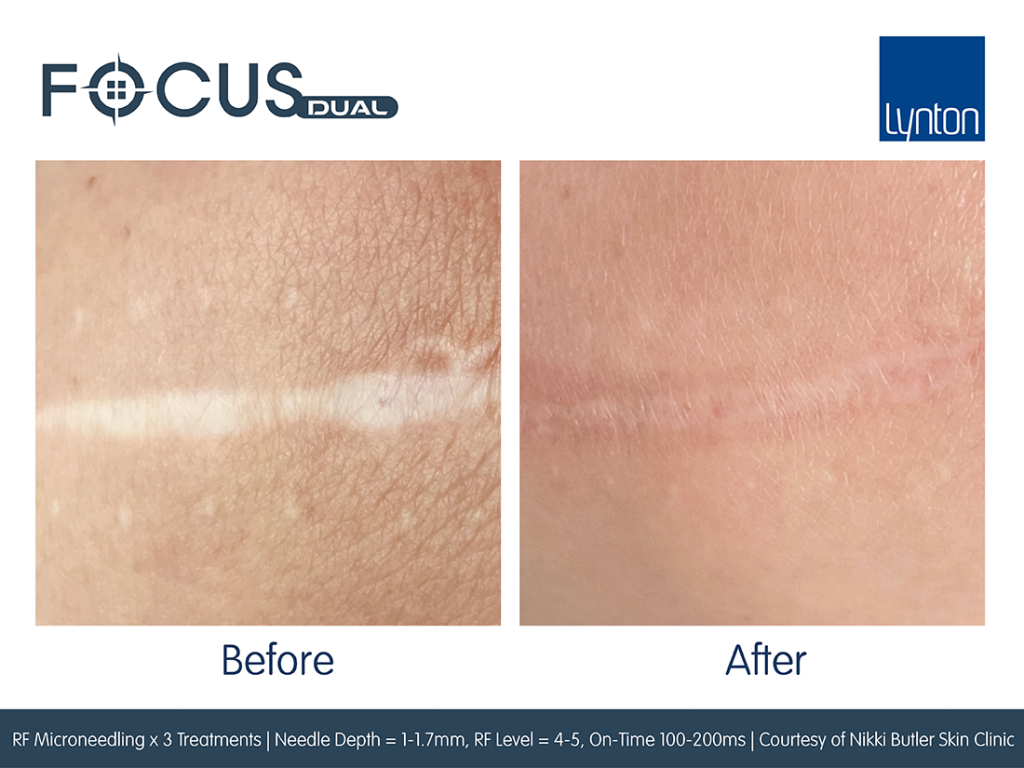SCARS, STRETCH MARKS REDUCTION
Radiofrequency micro needling stimulates the repair process for scarring by immediately boosting the production of collagen. The result? Plumper and a more even skin texture
Radiofrequency Micro needling (RFM) have for scarring and stretch marks?
Scarring and stretch marks are very common concerns. The process of RFM helps the body produce new collagen and elastin, which will reduce fine lines, smooth out uneven textures, and reduce any discolouration from acne scars, surgical scars, traumatic scars and stretch marks.
How does Radiofrequency Micro needling work for scars and stretch marks?
Ultrafine needles penetrate the skin to different depths whilst simultaneously releasing radiofrequency (RF) energy to heat the skin in a controlled manner, stimulating a wound healing response leading to the production of new collagen and elastin. The net result is an improvement in the appearance of facial or body scars or stretch marks.

Results can be seen after just one session. However, a minimum of 3 and up to 8 treatments, at 4-week intervals, deliver the best results, depending on the skin concern.
Most patients see an improvement 2 to 3 weeks after the first treatment. Results are natural and get better over time, peaking at 12 weeks following the final treatment.
There is virtually no downtime. A slight swelling and redness are present immediately post-treatment but should subside quickly.
- Avoid sun exposure and self-tanning (including sunbeds) two weeks prior to treatment.
- Avoid using acid/chemical-based products on the area one week prior to treatments (for example glycolic/salicylic acid and retinols).
- Inform your clinician of any changes in medication/health.
- Inform your clinician if you have a history or flare up of cold sores as this can impair treatment. Anti-viral medication may be taken if necessary.
- The treated area can be red or pink in colour after the treatment and this may last for a few hours. It will also feel warm to the touch during this time.
- Bruising may occasionally occur after treatment in delicate areas, especially around the eyes. This can last up to 5 days but should resolve with no long-term effects.
- A high protection sunscreen should be used after treatments and sun exposure should be avoided for 4-weeks post-treatment.
- Make-up can be applied after 12 hours.
- Immediately after treatment, contraction of collagen fibres improves the skin’s elasticity, so your skin will appear firmer. This can be temporary as the production of new collagen takes time, and best results are seen after your course of treatments (continuing for 3 to 6 months after the end of your course).
- Avoid alcohol and keep hydrated by drinking plenty of water.
- Avoid heat treatments such as hot baths/showers, saunas, steam rooms.
- Waxing, tweezing and depilatory creams can be resumed 7 days post treatment.
- A non-exfoliating cleanser and light moisturizer can be used on the day of treatment and for 1-2 days afterwards. By around day 3 normal skin routine can be resumed, however, avoid acid/chemical-based products for at least 7 days post treatment.
- Further laser treatment, chemical peels, Botox/Dermal fillers can be resumed 2 weeks post treatment.
- Blistering is very unusual, but if it does occur, contact the clinic immediately for further advice. Keep the area clean and dry and allow to heal naturally. Do not use any lotions or creams on open skin as this may increase the risk of infection. Grazing or flaking can sometimes occur following treatment, so it’s important you DO NOT pick grazes or blisters – as this may increase the chance of a scar occurring. Once the skin has healed, a high protection sunscreen should be used daily for 12 months to prevent pigmentation changes to the skin.



- Revive Skin and Laser Centre, 25 Reindeer court, Mealcheapen street, Worcester WR1 2DS
